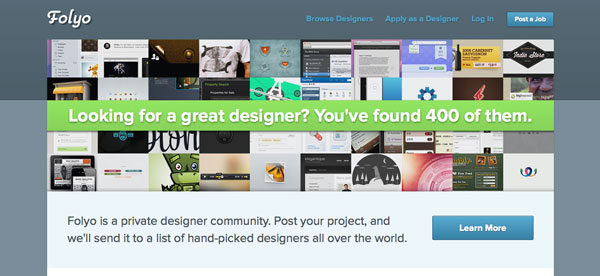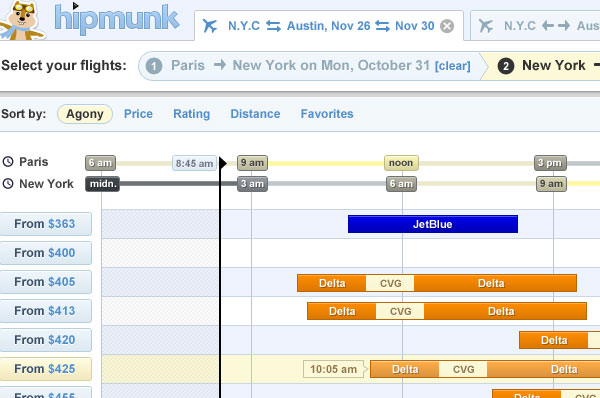One Minute With…
Sacha Greif

Hi Sacha, thanks for taking the time to chat with One Minute With. Tell us a little bit about yourself and your work.
Hi! I would usually say that I’m a freelance user interface designer, but these days I’m not doing much freelancing or, in fact, design. So I don’t know how I’d describe myself. Maybe “product designer”, except in this case the product is myself! So I guess I’m a “self designer”, although that sounds really pretentious…
Anyway I’ve got lots of things going on, including my blog and newsletter, Folyo, and an upcoming open-source app that I’m hoping to unveil very soon…
How did you get into design? Was there a defining point in your career, and if so, how did it shape you as a designer?
I didn’t wake up one day and decided to be a designer, it was a much more gradual process. I started out doing websites for friends and small clients on and off for about 5 years while studying Chinese and Computer Science. I then lived in China one year, working as a project manager in a small web agency. I then came back to France and worked at UNESCO for one year, then started freelancing.
All throughout these years, I fluctuated from doing design, to coding, to doing both, before finally settling into being purely a designer (because dealing with IE bugs was just too much of a pain). But now that I’m working on my own projects, I’m finding myself spending a lot more time coding again.
So to make it clear, I have no formal design training and I’m pretty much entirely self-taught when it comes to design.

What do you think of as the biggest achievement in your career so far? And for balance, what do you consider your biggest failure?
I would have to say one of the biggest achievement was working with Hipmunk. Here’s a popular, successful startup in San Francisco (which has an amazing concentration of design talent), and they decided to work with me out of all the designers in the world. Working with Le Monde on their first iPad app was really cool too!
My biggest failure is probably the year I spent working at UNESCO. It took me one year to build a fairly complex survey tool, but then I left before ever building the tool to extract the survey results. So I’ve always suspected that those results are just sitting in a database somewhere, forever waiting for someone to build the second half of the project…
Personal projects are very much your thing – From the reasonably small Patternify, to the more substantial Tooolbox, to the even bigger Folyo. How beneficial is it, do you feel, to work on these self-initiated projects, as opposed to just paid client work?
If we’re talking about benefits in terms of money, the answer is “not beneficial at all”. But in terms of having fun and getting my name out there, then the benefits are huge. I also find it much less stressful to only work on personal projects, as you don’t have deadlines or external pressure.
So my goal is to eventually reach a point where my personal projects enable me to live comfortably, and even surpass the income I would get as a freelancer.

So you started off selling themes on ThemeForest, and you’re now selling an e-book “Step by Step UI Design“. How important do you think it is for designers to have a source of passive income, especially in an industry where work can fluctuate so much? Do you think this trend will keep becoming more prevalent, or do you see a saturation point on the horizon?
Again, it’s very important for me. But from speaking to other designers it seems clear that a lof of them just want to design, and there’s nothing wrong with that. I’m a bit different in that I can code, and I’m also interested in marketing, so selling my own products is a good fit for what I can do, and what I want to do.
So my message is more that I tell designer that they can sell their own products if they want to, and I often try to show how I do it myself. But I’m not interested in forcing everybody to see things my way.
And to touch on the third thing you’re best known for – Your blog, where you share all kinds of great tips, resources and opinions. Do you feel an obligation to contribute back to the community that fostered you? Do you think your writing has improved your design skills in any way? Are there any skills which can be transferred from one to the other?
“Contributing back to the community” is a nice way to put it, or you could call it “self-promotion”. Either way I try to put out informative and useful content, and people seem to like it. Although it does worry me that you’re saying I’m best known for my blog, I would prefer to be best known for my designs… Guess you can’t have it all ;)
And yeah, writing a lot definitely helps become a better communicator, which is almost always what design is about, too. Again though, not every designer has to become a great writer. It’s perfectly acceptable to choose to focus on other things, if that works for you.
I guess what I mean is that the world needs designers like me who spend a lot of their time writing, but it also needs people who can create awesome iOS icons that get 500 likes on Dribbble!

If, in some Freaky Friday-like situation, you could live the life of another designer, illustrator or creative, for a day, who would it be, and why?
I’ve been mentally preparing for this question after seeing it in previous interviews! If I could switch with another creative I would like to switch with the head creative at a troubled company like BlackBerry, HP, or Yahoo. I think it would be an amazing opportunity to change the course of an entire company and try to come out with an iPhone-like revolutionary product.
Plus, since we’re only exchanging for a day, if my idea doesn’t work out it won’t be my problem anyway.
How would you define success? Do you think you’ve found it yet?
I think success is different for everybody. For a lot of people, being successful means making money, but for me it also means minimizing stress. Of course, both these things tend to be inversely correlated… So I guess for me, success will be finding a way to achieve both at the same time.

And finally, what tips would you give to anybody who is looking to get started in design?
Care. If you really, truly care about something I don’t see how you can avoid getting good at it. I think we often don’t allow ourselves to care about things because we’re afraid that caring too much will lead to disappointment. You just need to get past that and realize that it’s okay to care so much about design that you spend your whole day reading old Smashing Magazine articles, or obsessing over a single icon.
I don’t think it’s a coincidence that teenagers get so good at things so quickly: they don’t have that little voice in the back of their head that tells them it’s not responsible to invest yourself 100% in a single thing, so they have nothing to hold them back.
So channel your inner teenager or even better, you inner 10-year old, and you’ll become a great designer in no time!